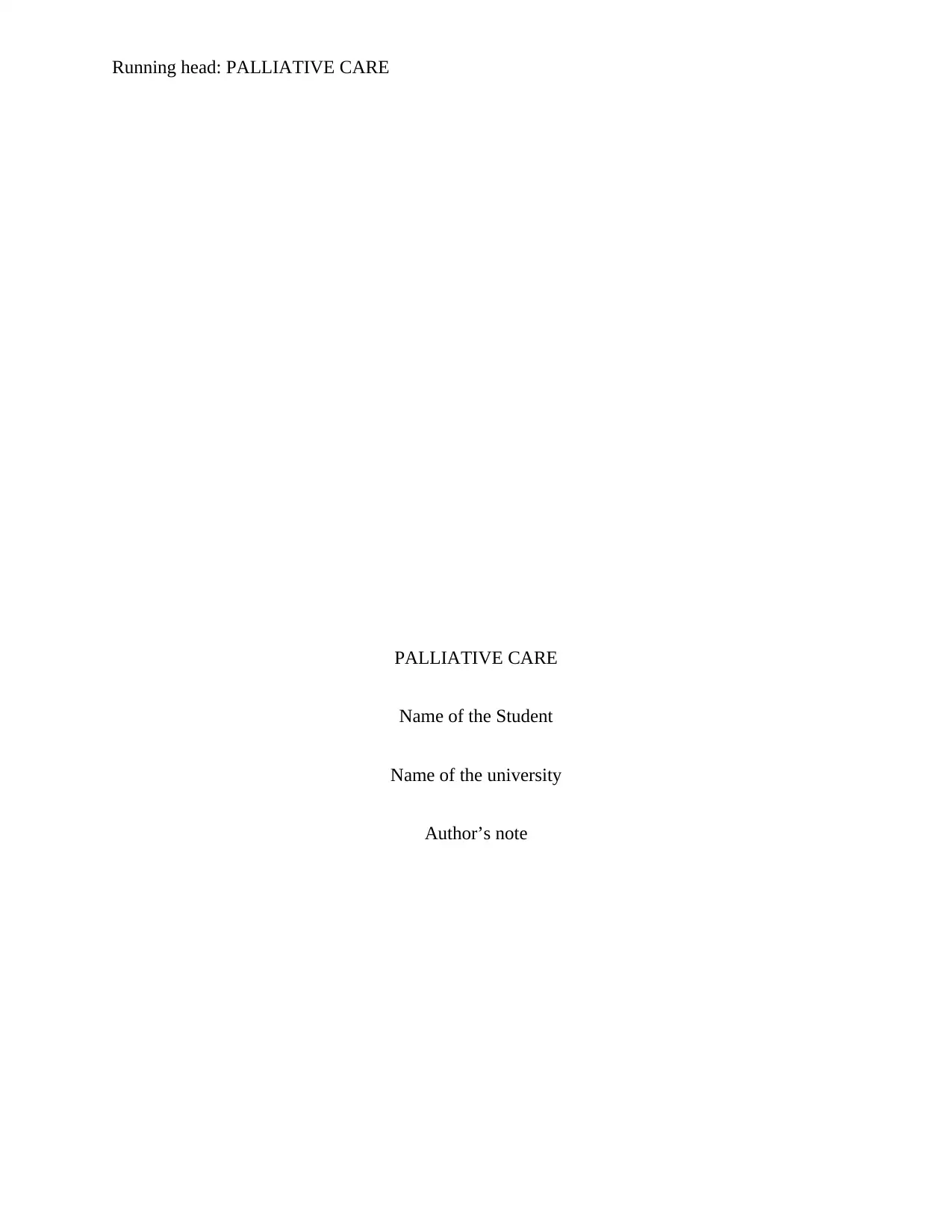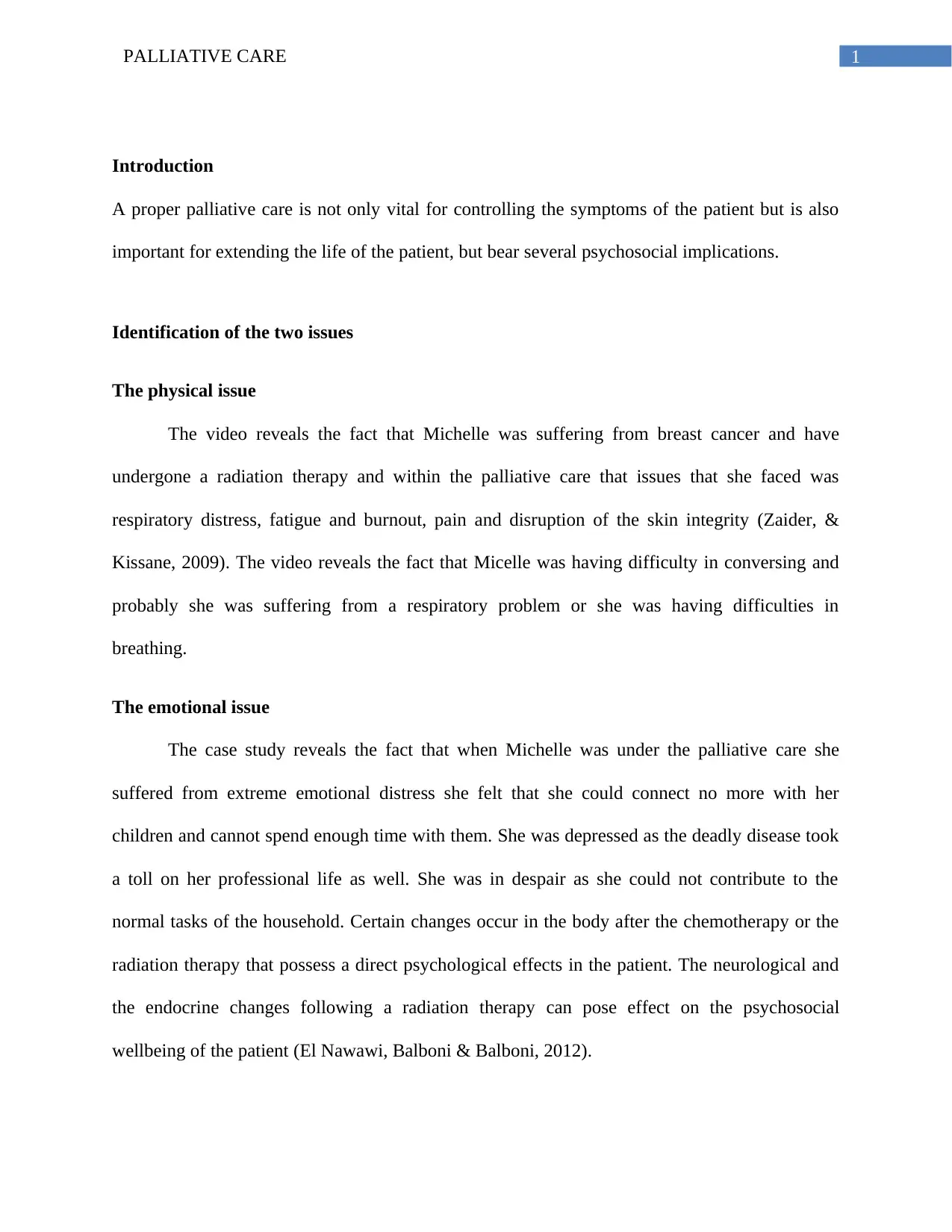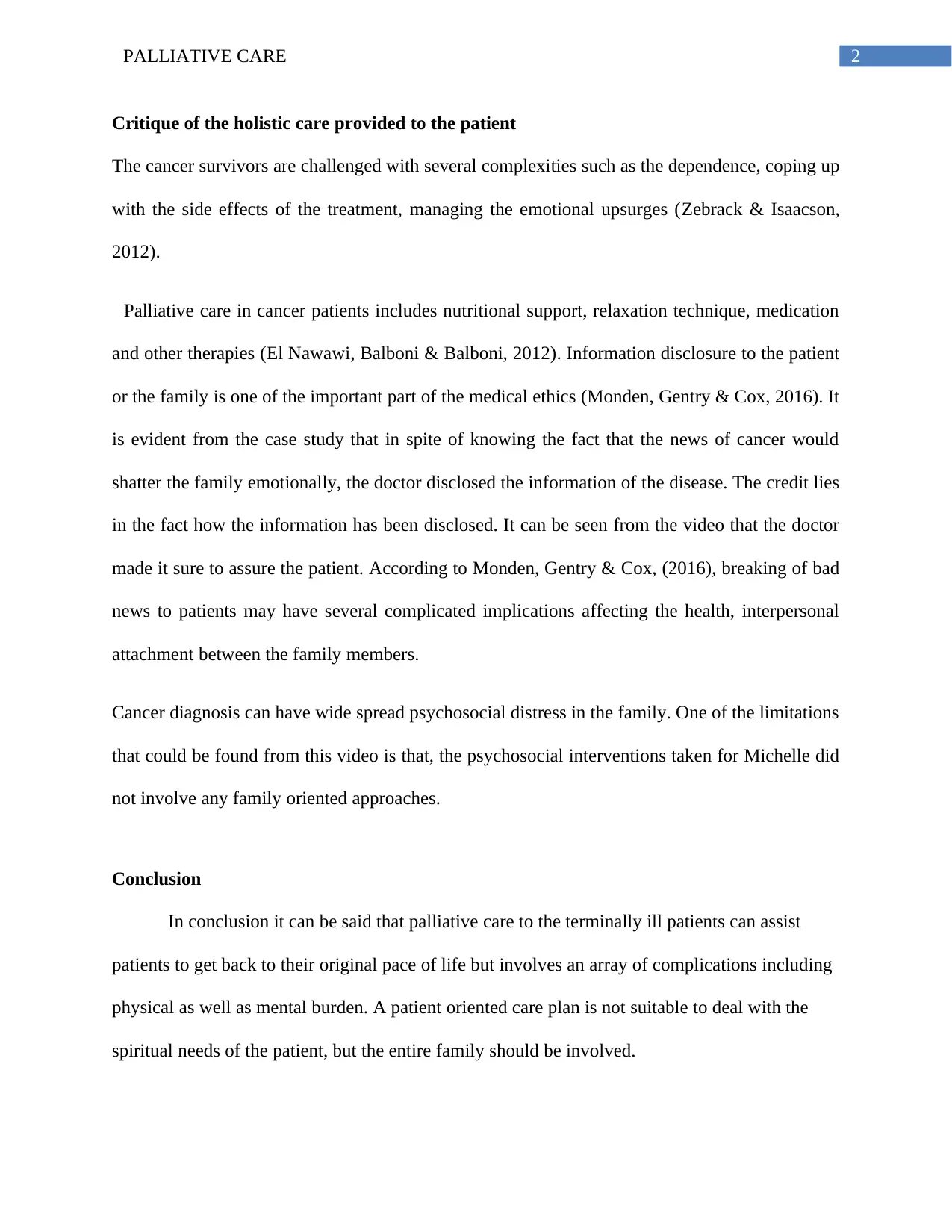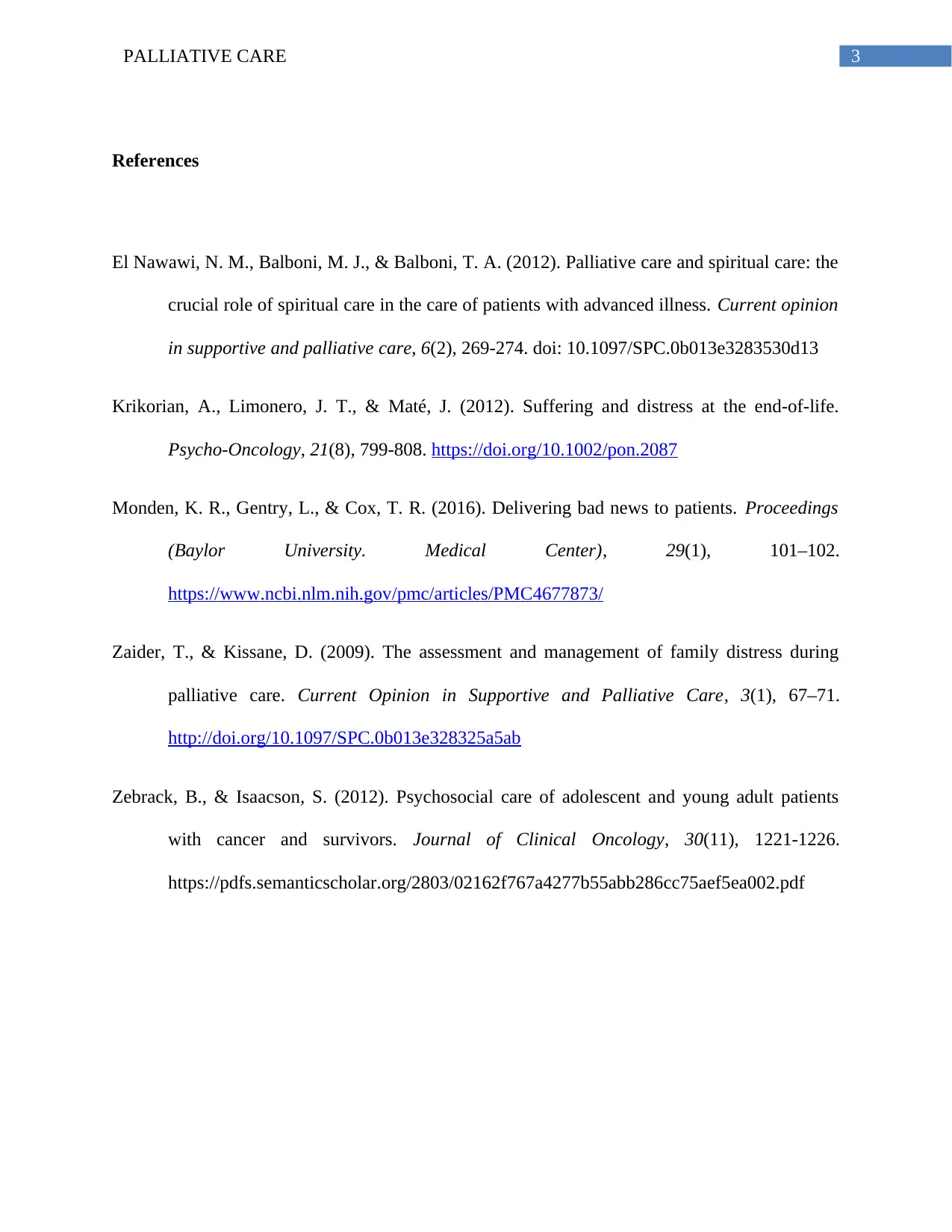Palliative Care: Physical, Emotional, and Holistic Approaches
VerifiedAdded on 2021/05/27
|4
|803
|492
Report
AI Summary
This report analyzes a palliative care case study focusing on a patient, Michelle, suffering from breast cancer and undergoing palliative care. It identifies physical issues such as respiratory distress, fatigue, and skin integrity disruption, as well as emotional distress stemming from her inability to connect with family and contribute to household tasks. The report critiques the holistic care provided, emphasizing the importance of information disclosure and family-oriented interventions, while also acknowledging the limitations of not involving family in psychosocial interventions. The conclusion underscores the benefits and challenges of palliative care, advocating for patient-centered care plans that involve the entire family to address both physical and spiritual needs. The report references several key studies related to palliative care, emotional distress, and family involvement.
1 out of 4






![[object Object]](/_next/static/media/star-bottom.7253800d.svg)